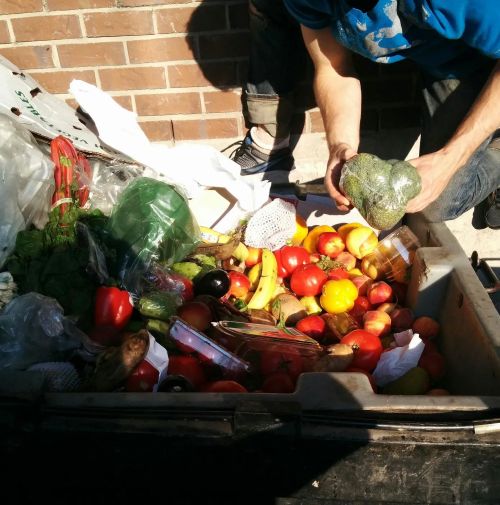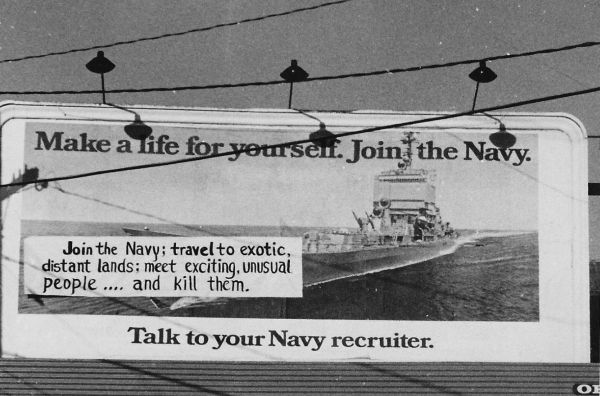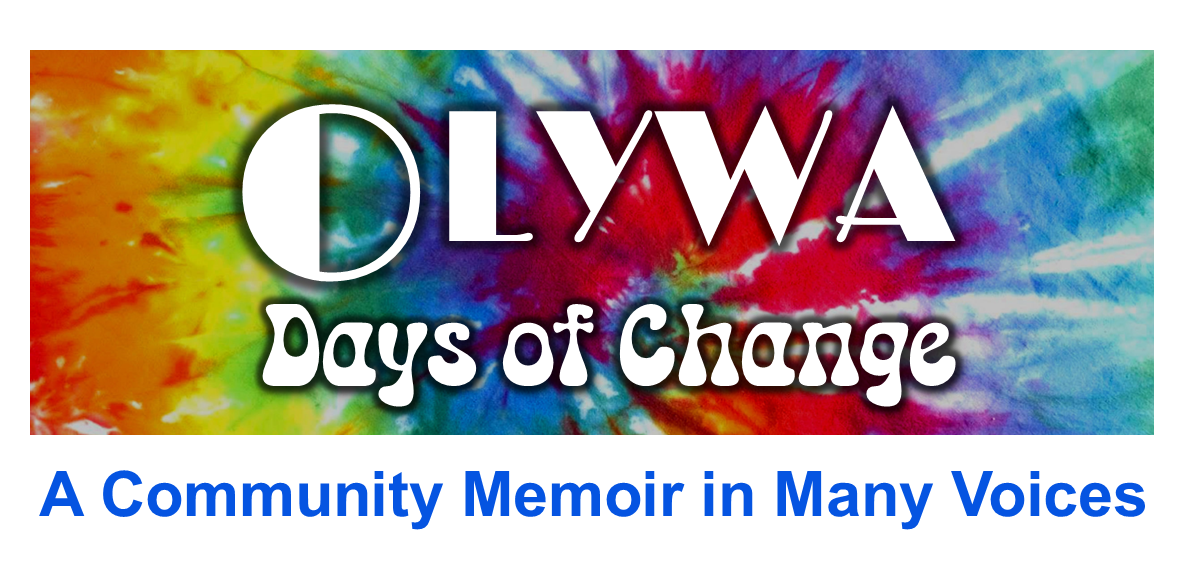HOUSEHOLDS
Moldy Mansion: Tales of Dumpstering and Billboarding
By Regon Unsoeld

Back in the 1970s there were quite a few group households that organized and became intentional communities in the Olympia area. Many of them were part of the bulk buying club network that preceded the eventual creation of the Olympia Food Co-op.
There was another group of folks during this time period who also shared a group living space and had other means of obtaining food for their household. This group’s living situation differed in a few key ways from most of the other communal and collective households in that the structures that gave them shelter had been unoccupied for quite a while and were slated to be eventually torn down and replaced by more upscale structures. Rather than participation in the bulk buying network, the residents of this household obtained most of their food by salvaging (some would say scavenging) discarded food from grocery store dumpsters.
There were in fact two such households. The first, appropriately called the Moldy Mansion, was located on the water side of West Bay Drive within a few hundred feet of Harrison Avenue. It was a two-story structure with a beautiful view of Mount Tahoma (Rainier) at Steh-Chass (Budd Inlet) near the southernmost point of the Salish Sea. A jungle of dense blackberry vines wove around the house and all the way down to the water.
The roof leaked quite badly, causing only one of the three upstairs rooms to be habitable. Most of the four or five core residents slept in the living room downstairs. The soggy wallpaper-covered walls in the other two upstairs rooms provided the necessary nutrients for an assortment of wild mushrooms and fungi that grew out of the walls. Visitors frequently came by just to marvel at this spectacle, giving rise to the name Moldy Mansion.
We estimated that approximately 90% of the food we consumed was obtained by climbing over the walls of the industrial-sized dumpsters at several local grocery stores in order to help ourselves to the bruised fruits and vegetables, the dairy products past the pull date, and a wild assortment of other items discarded by the store staff. One memorable dumpster forage produced 32 quarts of half and half! We borrowed a manual ice cream maker, took up a collection to buy ice, and transported everything out to the loop in front of A Dorm at Evergreen where we churned and distributed free ice cream all afternoon and into the evening.
As Evergreen students familiar with the basics of good seminar practice, dumpstering did provide us from time to time with opportunities to put our seminar skills to work. We would occasionally come across neatly packed cardboard boxes carefully placed in a corner of the dumpster away from the rough and tumble of discarded foodstuffs. We believed that these were evidence of “inside jobs,” placed carefully in the dumpsters by store employees in order to retrieve them later when they went off shift. The first few times we encountered these boxes we conducted an informal seminar on the ethics of helping ourselves to items in the boxes as they were usually in far better condition than the mounds of discarded food items we were usually rummaging through. I don’t recall ever removing any of the boxed items for our use, but I do remember leaving an occasional note for whoever would be coming back to retrieve their carefully packed box explaining that we had encountered it while seeking food for our household, and had discussed the ethics of helping ourselves to items in their box, before deciding instead to leave a note letting them know that we had been there and had decided to leave their box undisturbed.
People driving by could understandably think that we were squatting at this address, but we were in fact members of the renting class. Two of our core members had observed this structure for some time, noticing the proliferation of graffiti and the overall rundown appearance of the place. They were able to locate the owner through the county assessor’s office and offered to ensure that he would receive no complaints about the people inhabiting his property in exchange for a reasonable level of rent. We paid a total of $75 a month, which was still a tidy sum back in those days, but was quite affordable for us as it came to only $12.50 each when split among the five core residents. It provided us with a home, shelter from the elements, a close-knit group of friends, with electricity and running water.
Most of us were experienced hitchhikers and we would regularly check out the I-5 on-ramps in our 1966 VW bus as night fell in order to offer stranded hitchhikers a place to have a meal, crash for the night, and get a ride back out to the freeway in the morning. Some of these folks ended up becoming part of our household for extended periods of time as long as they were able to contribute in some positive manner to the household.
In addition to regular dumpstering, members of our core group also engaged in billboarding, something we referred to as “billboard enhancement.” This involved modifying, or at times replacing, the message being conveyed by the billboard we had selected as a target for our enhancement efforts.

Billboarding did involve taking some risks. These ventures were conducted under cover of darkness because we were quite certain that our actions could arguably be deemed illegal. Some of the targeted billboards were also quite high off the ground and posed some interesting climbing challenges to get up to the walkway just below the face of the billboard. We would usually prepare our alternative text in advance by painting it onto sheets of butcher paper. We would let these dry, roll them up, fill several jars with wallpaper paste, and scale the billboard to get to the walkway. We would unroll our butcher paper, apply the wallpaper paste, and glue our message to the billboard surface.
Ethical dilemmas presented themselves to us regarding our billboarding activities, just as they had arisen when we encountered neatly packed cardboard boxes in the bottoms of store dumpsters. We ended up developing some guidelines regarding the selection of our targets and the manner of enhancement that we felt would be appropriate to utilize.
For example, we found some billboard messages to be so egregious that our enhancement involved physically damaging or altering the original offending message. We applied this principle to the series of Black Velvet billboards that we found offensive because of the sexual objectification of the women depicted on these signs. We enhanced a Navy recruitment billboard by adding the slogan, “Join the Navy, travel to distant exotic lands, meet exciting unusual people, and kill them.” The Vietnam War provided a contextual backdrop for this high-visibility billboard project that was located where State Avenue turned left near Percival Landing.
The largest billboard we enhanced was empty of any previous signs and awaiting a new billboard message to be applied, so we obliged with a lengthy message about the ABM (Anti-Ballistic Missile) system. The one large billboard that we arguably defaced with an unrelated message was a cigarette billboard on top of the downtown Salvation Army building. We covered it over with this statement, “Arms first, then advisors… Remember Vietnam? Now it’s Angola.”
We encourage readers to use the form below to make comments and suggestions. Disclaimer
